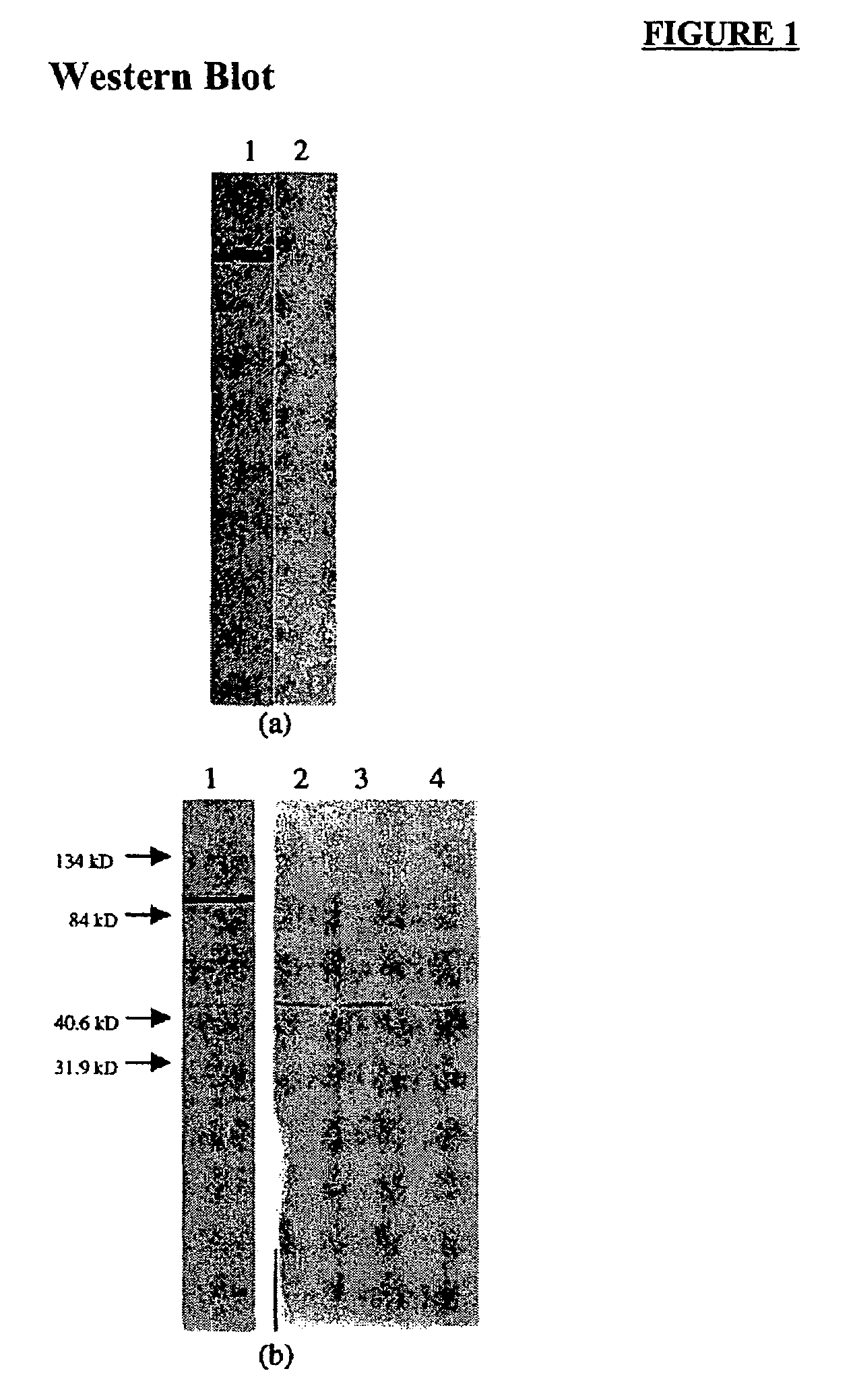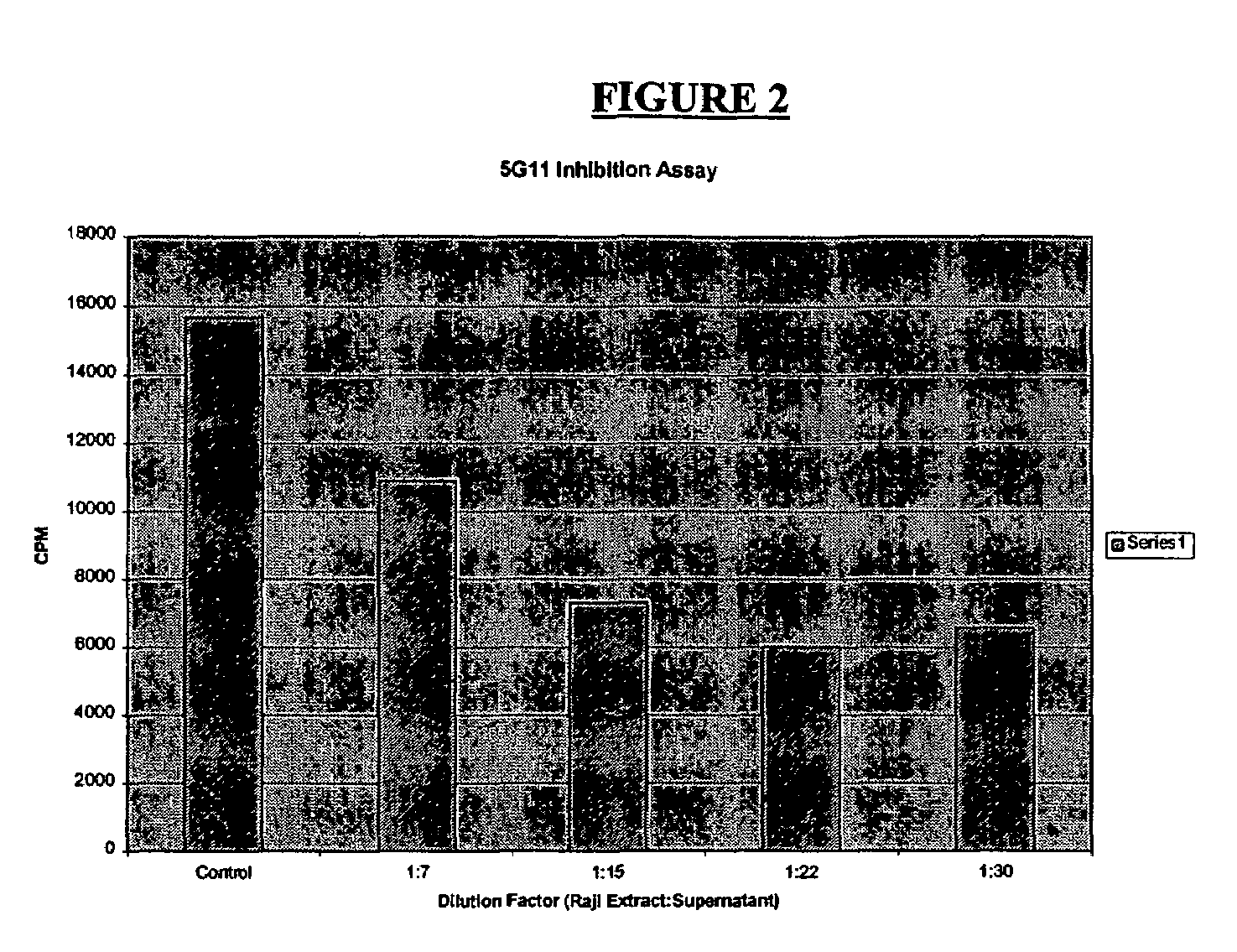Anti-viral activity of an anti-thymidine kinase monoclonal antibody
a thymidine kinase and anti-viral activity technology, applied in the field of viral infection treatment with a monoclonal antibody to thymidine kinase, can solve the problems of insufficient yield of purified tk, rate limitation, patent failure to overcome extreme lability associated with purified tk1, etc., to reduce viral burden in the mammal and inhibit viral replication
- Summary
- Abstract
- Description
- Claims
- Application Information
AI Technical Summary
Benefits of technology
Problems solved by technology
Method used
Image
Examples
example 1
Assay of Raji Cells for TK1 Activity
[0087]Preparation of TK1 and TK1 monoclonal antibody was performed essentially as described in U.S. Pat. No. 5,698,409, which is incorporated herein by reference. A crude cell extract was prepared from Raji cells (human Burkitt's lymphoma, American Type Culture Collection (ATCC) CCL 86) as follows. Approximately 1011 to 1012 exponentially-growing Raji cells were harvested by centrifugation from the growth medium. The pelleted cells were separated from the supernatant and resuspended in 1-2 mls of extraction buffer containing 0.02M Tris-HCl, pH 7.8, 0.05 M MgCl2, and 0.2 mM KCl. The cell suspension was subjected to three freeze-thaw cycles in liquid nitrogen and a 37° C. water bath. The ruptured cell suspension was then centrifuged at 30,000×g for 30 minutes at 4° C. to pellet cellular debris. The supernatant, containing about 50 mg / ml of protein, including TK and other soluble enzymes, was decanted from the pellet and stored frozen at −20° C.
[0088...
example 2
Partial Purification of TK1
[0090]TK enzyme was partially purified from the crude extract of Raji cells of Example 1 by DEAE-cellulose anion exchange chromatography. To obtain the largest yields of TK protein, it is desirable that the cells be in the exponential growth phase when harvested. The protein content of the crude extract was determined using the well-known Bradford assay. A total of about 1.0-2.0 grams of protein from the crude extract was added to a DEAE-cellulose column and washed with 10 void volumes of 0.1M Tris-HCl (pH 8.0) using gravimetric flow. The column was eluted with 0.5M Tris-HCl (pH 8.0), and 1.0 ml fractions were collected.
[0091]A chromatograph of the absorbance measured at 280 nm as a function of elution time was produced. Aliquots of the collected fractions were assayed for TK1 activity generally as described in Example 1. Multiple runs were pooled and were concentrated using an Amicon protein concentrator.
example 3
Purification by FPLC
[0092]An FPLC column (Pharmacia MONO-Q 5 / 5 anion exchange column) was loaded with 0.1 ml of the concentrated DEAE-cellulose fraction, described above, containing about 1 mg protein, and voided with 10 volumes of Buffer A (50 mM Tris-HCl pH 8.0). A programmed gradient was set up to gradually increase the concentration of Buffer B (1.0M NaCl, 50 mM Tris-HCl, pH 8.0) from 0-100% over 20 minutes running at a constant flow rate of 1.0 ml / min.
[0093]The protein was detected as it eluted from the column by absorbance at 280 nm. Fractions containing the 280 nm absorbance peaks were collected and assayed for TK1 activity as described previously herein.
[0094]The fractions having TK1 activity from several runs were collected, pooled and concentrated. This partially purified, pooled sample was then re-run on the MONO-Q column with a lower gradient. One-tenth ml portion of pooled sample containing about 1 mg protein was loaded on the MONO-Q column as before. For this second ru...
PUM
| Property | Measurement | Unit |
|---|---|---|
| molecular weights | aaaaa | aaaaa |
| molecular weights | aaaaa | aaaaa |
| pH | aaaaa | aaaaa |
Abstract
Description
Claims
Application Information
 Login to View More
Login to View More - R&D
- Intellectual Property
- Life Sciences
- Materials
- Tech Scout
- Unparalleled Data Quality
- Higher Quality Content
- 60% Fewer Hallucinations
Browse by: Latest US Patents, China's latest patents, Technical Efficacy Thesaurus, Application Domain, Technology Topic, Popular Technical Reports.
© 2025 PatSnap. All rights reserved.Legal|Privacy policy|Modern Slavery Act Transparency Statement|Sitemap|About US| Contact US: help@patsnap.com


